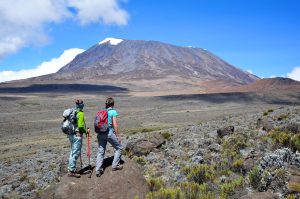Climate Overview of Serengeti National Park
Serengeti National Park, located in Tanzania, is a world-renowned safari destination known for its diverse wildlife and stunning landscapes. Understanding the weather patterns in this region is essential for planning a successful safari experience. The climate in the Serengeti is characterized by two main seasons: the dry season and the wet season.
During the dry season, which typically runs from June to October, the park experiences minimal rainfall and sunny weather. This is considered the best time to visit the Serengeti as the dry conditions make it easier to spot wildlife congregating around water sources. The temperatures during this season are moderate, ranging from 70°F to 80°F, making it an ideal time for game drives and outdoor activities.
On the other hand, the wet season in the Serengeti occurs from November to May, with the peak of rainfall falling between March and May. The park transforms into a lush, green landscape during this time, with an abundance of water sources attracting a variety of wildlife. The temperatures are slightly higher during the wet season, ranging from 75°F to 85°F, and humidity levels can be quite high.
Factors Influencing Weather Patterns in the Region
Several factors influence the weather patterns in the Serengeti National Park, including its geographical location, elevation, and the movement of weather systems. The park is situated near the equator, which means it experiences a tropical climate with relatively consistent temperatures throughout the year.
The elevation of the Serengeti also plays a significant role in its weather patterns. The park’s varying elevations, ranging from 3,000 to 6,000 feet above sea level, create microclimates that can affect temperature and precipitation levels. Areas at higher elevations tend to be cooler and receive more rainfall compared to lower-lying areas.
The movement of weather systems, such as the Indian Ocean monsoon, also influences the weather in the Serengeti. During the wet season, moisture-laden air masses from the Indian Ocean bring rainfall to the region, creating the lush conditions that support a diverse ecosystem. These weather patterns can be unpredictable, so it is important to be prepared for sudden changes in the weather while visiting the park.
In conclusion, understanding the weather patterns of the Serengeti National Park is crucial for planning a memorable safari experience. Whether you choose to visit during the dry season or the wet season, each season offers unique opportunities to witness the beauty of this iconic African wilderness. For a chance to explore the Serengeti and witness its incredible wildlife up close, book a safari tour with Sunset Africa Safari by contacting info@sunsetafricasafari.com. Plan your adventure today and immerse yourself in the wonders of the Serengeti National Park.



